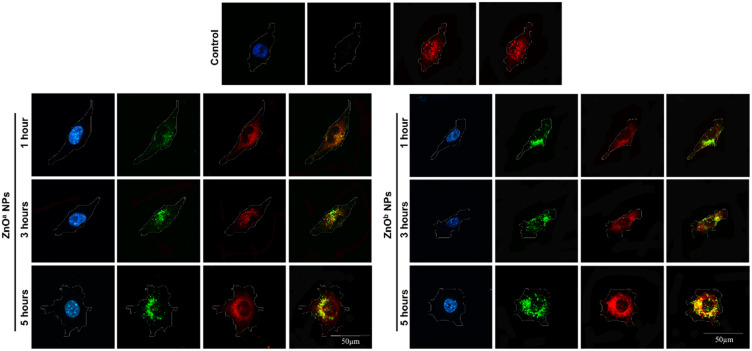Liu J, Kang Y, Yin S, et al. Int J Nanomedicine. 2017;12:8085–8099.
The authors have advised the control images for Figure 4A and B were the same to represent the one and the same control group. To alleviate any potential confusion this may have created, the authors have provided a corrected Figure 4. This correction does not change the scientific conclusions of the article in any way.
Figure 4.
Confocal microscopy investigation of the cellular distribution of lysosomes and zinc ions in SH-SY5Y cells after the two types of ZnO NP treatments.
Notes: After the SH-SY5Y cells were untreated (the Control group) or treated with the ZnOa NPs and ZnOb NPs (50 µg/mL) for 1 h, 3 h, or 5 h, the cells were loaded with FluoZin3 (green), LysoTracker (red) and Hoechst 33342 (blue). We observed almost no zinc ion fluorescence in the Control group, but significant zinc ions (green) were observed within 1 h after the ZnO NP treatment, and a slight increase in the zinc fluorescence (green) was observed in a time-dependent manner. Treatment with ZnOb NPs exhibited more potent fluorescence values than treatment with ZnOa NPs at 1 h. Moreover, significant overlaps (yellow) between cellular zinc ions and lysosomes were observed at all timepoints. Scale bar = 50µm. Magnification x600.
Abbreviation: NP, nanoparticle.



